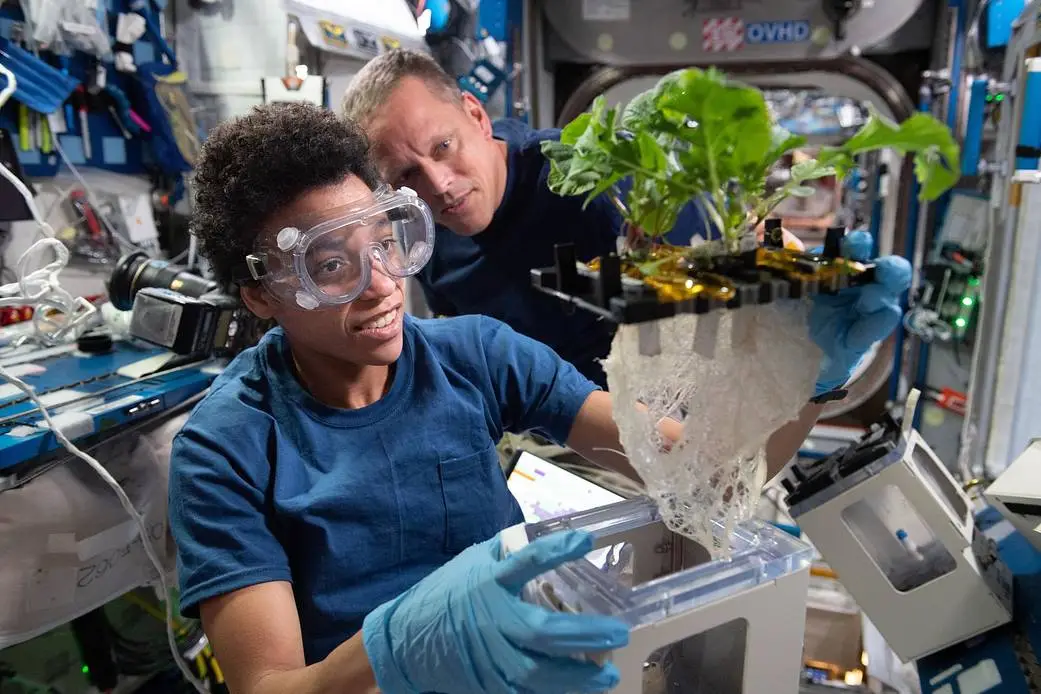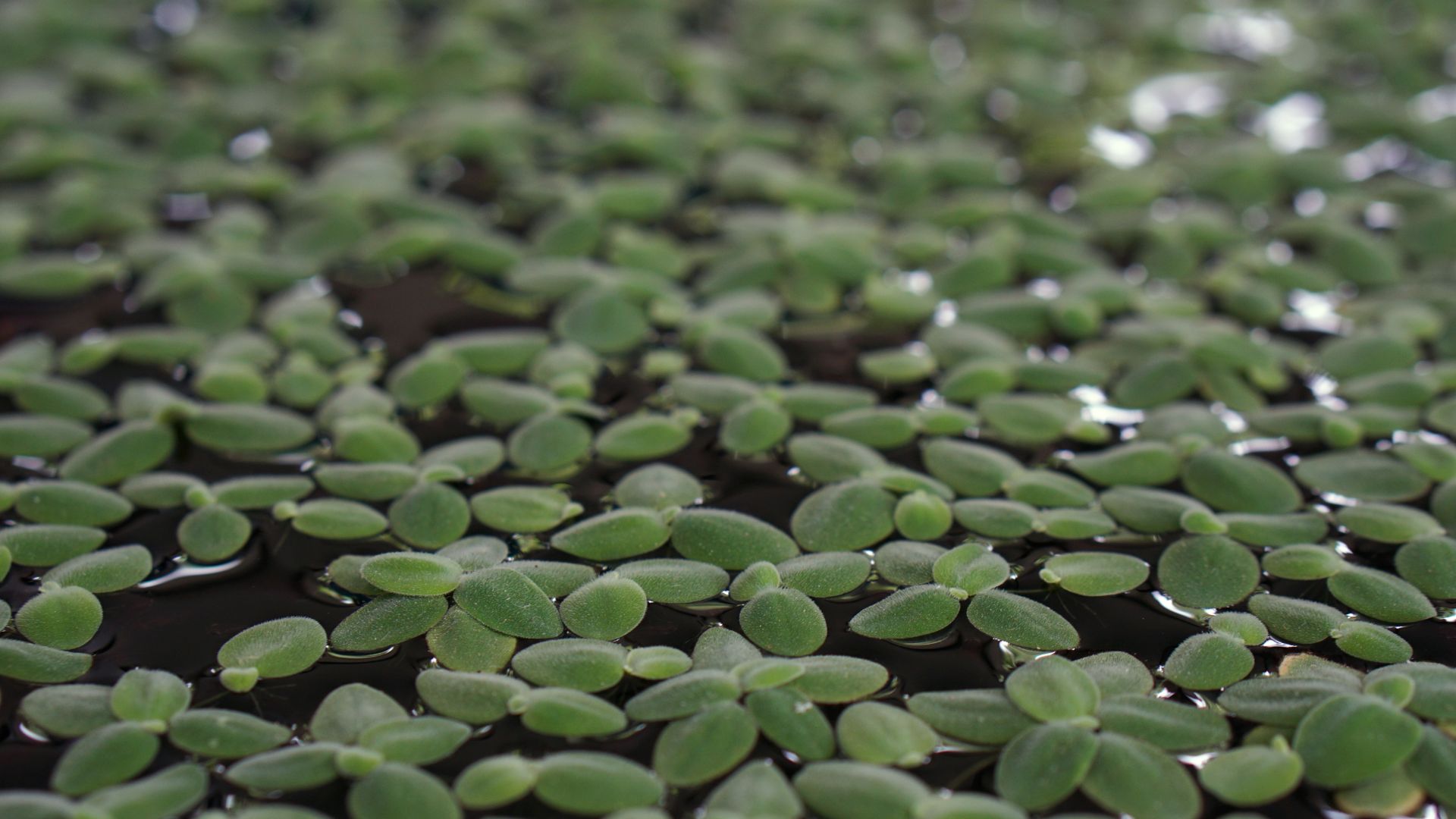How Preparing Plants for Space Can Push Synthetic Biology Boundaries on Earth?
Plant experiments are routine in the space station, but can synthetic biology push even further the plant science boundaries and provide fresh produce for future missions to the moon or Mars?
Mar 5, 2024
[DALL-E]
In 1869, the novella "The Brick Moon" by Edward Everett Hale described how the trees look like the hypothetical space station Brick Moon. This might be the first-ever discussion of plants growing in space, decades before the first airplane flight.
Space exploration is one of SynboBeta's favorite topics and will be discussed extensively during the SynbioBeta 2024 Conference, where Chris Udall from gener8tor is chair of the Space Exploration track.
Gardening in Orbit
Growing crops outside of Earth was commonly connected to deep space exploration, interplanetary travel, and human colonies on the moon, Mars, or beyond. While missions in close orbit can be readily resupplied with fresh food within short intervals, crews spending significant time in a lunar colony or traveling to and from the red plant would need a way to grow their food. Plants serve as a food source but also significantly affect the astronauts’ psychology. The earthy smell of crop-growing soil, the sight of decorative plants, and the positive associations formed with gardening are strong anchor points that remind astronauts of home in an inhospitable and empty environment.
However, growing plants outside Earth comes with a multitude of challenges. Microgravity and high radiation can have a detrimental effect on plant growth. Plants require an ecosystem to thrive, including pollinators and specific soil microbes. Nevertheless, several plants have been brought into orbit and survived, and astronauts now grow and consume plants in space. NASA’s VEGGIE is a space garden at the International Space Station that helps test and showcase new space gardening innovations.

In a very promising experiment, researchers from the University of Florida managed to grow the model plant Arabidopsis in lunar soil. This shows that plants might be more flexible and adaptable than we think and paves the way for more ambitious research on this front.
Synthetic Biology is the Only Way to Evolve “Space Varieties”
Despite the limited success in growing a small variety of plants outside the confines of our planet, we have a long way to go before we become competent space gardeners. Plants evolved and adapted in the Terran ecosystems over hundreds of millions of years. Humans changed the planet's landscape with agriculture, and after thousands of years of breeding, crop plants can now feed billions of people in our population. But if we want to adapt plants to grow on lunar or Martian soils, we must use synthetic biology. The science and art of reading and writing DNA accelerates the process of evolution and natural selection, transfers beneficial traits between organisms, and makes the design and testing of new traits possible.

This interspace between synbio and space exploration gave birth to the Plants for Space initiative, a Center of Excellence funded by the Australian Research Council. The center is hosted at the University of Adelaide and has more than 36 partners from academia, industry, and government, including NASA and the British and German space agencies. In the announcement of the center, Professor Matthew Gilliham, Director of Plants for Space, stated, “The mission of Plants for Space is to re-imagine plant design and bioresource production, through the lens of space, to enable off-Earth habitation and provide transformative solutions to improve on-Earth sustainability."
But how exactly do the researchers plan to prepare pants for space travel? “Plant metabolic engineering is hard,” Jenny Mortimer, Associate Professor at the University of Adelaide and Chief Investigator at Plants for Space, said. “Engineering them has many variables, and the more these variables turn into constants, the more problems we can solve.” In a recent perspective article, Mortimer and her coauthors identify a few areas where plant synbio could contribute to space exploration. The premise is that pants can act as edible biomanufacturers that can provide food, medicines, biofuels, and plenty of other valuable compounds. Using synthetic biology, plants can be customized to produce what is needed when needed.
Ryan Lister, Professor at the University of Western Australia and Chief Investigator at Plants for Space, wants to take this concept even further. His research revolves around designing elegant and accurate gene circuits that can activate whole metabolic routes with precision. Therefore, a single plant could contain an entire biosynthetic arsenal, ready to produce many different products on demand. I asked him what his plant of choice would be. “I like the idea of tomatoes that are naturally compartmentalized,” he said. “We can develop specific tools for the fruit, leaves, and other parts of the biomass that can be repurposed.”
Mortimer’s plant of choice would be the inconspicuous duckweed, a small plant rich in protein that gains more attention as a sustainable food source. Duckweeds have small growth cycles and can be cultivated in liquid, making synbio research on them speedier than in larger plants.

Bringing Lessons Back to Earth
Mortimer pointed out the similarities between growing plants in growth chambers in space and vertical farms on Earth. The available space is confined, the nutrients need to be used optimally, and growth needs to become efficient. Developing fast-growing, adaptable plant varieties that can be deployed anywhere can increase food security, especially in emergencies. Lister explained that engineering crops with increased climate tolerance can be beneficial to adapt to climate change. But ultimately, he sees the initiative as a chance to showcase what synthetic biology can do. “We hope to see that focusing on particular challenges with limiting conditions will necessitate the use of plants with new capabilities and showcase the use of synthetic biology,” Lister explained. Both researchers hope to see the plants their labs produce grow in orbit or even on the moon!
Being absorbed in ourselves and our troubles, we tend to forget the bigger picture, which sometimes we can only see from outside our little earth. We are all co-travelers in a planetary spaceship, and, having self-assumed the role of the planet’s stewards, we need to maintain and even improve what we deliver to the next generations. Space travel puts this into perspective, shows our boundaries, and lets us surpass them. And what better boundary than growing our own plants on the way to a different planet?


















